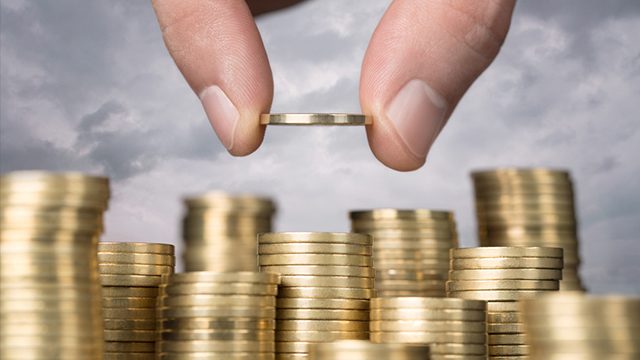SUMMARY
This is AI generated summarization, which may have errors. For context, always refer to the full article.

MANILA, Philippines – Microfinance, or financial services extended to low-income individuals or those with no access to formal banking, is thriving in the country, according to the Bangko Sentral ng Pilipinas (BSP).
These services, which usually come in the form of small loans, are especially important given that 99.6% of the economy is made up of micro, small, and medium enterprises (MSMEs).
Overall microfinance loans surged 333% to P11.3 billion in 2015 from P2.6 billion in 2002, said BSP Governor Amando Tetangco Jr in his keynote message at the launch of the 14th Citi Microentrepreneurship Awards on Tuesday, May 17.
Tetangco added that the number of borrowers jumped 277% to 1.47 million from 390,635, as the number of banks providing microfinance loans surged 43% to 170 from 119.
The country’s top banker attributed this to improvements in the microfinance environment, highlighting in particular the sustained coordination and cooperation with microentrepreneurs, banks, microfinance institutions, government agencies, and the private sector.
Multilateral institutions such as the Asian Development Bank have also played their part in developing the sector.
Data show that the loans are having the desired effect as well, with Tetangco pointing out that the finances of microentrepreneurs continued to improve. Their accumulated savings reached about P4.5 billion as of end-December.
Global recognition
“We are fully aware that we can do so much more to lift more Filipinos from poverty through microfinance. Nevertheless, we are encouraged by global surveys that indicate that the Philippines has one of the world’s best environments for promoting the quality of life of people through sustained development of the microfinance sector,” Tetangco said.
One such survey is Global Microscope, done by the Economist Intelligence Unit (EIU), which assesses the regulatory environment for financial inclusion in 55 countries.
In the survey’s 2015 edition, the Philippines scored 81, maintaining its status as the microfinance leader in Asia.
The country also ranked 3rd in the world next to Peru, which got a score of 90, and Colombia, which received 86.
The EIU lauded the National Strategy for Financial Inclusion (NSFI) launched by the BSP together with 13 government agencies.
Tetangco noted that the BSP issued guidelines on sound credit risk management practices through Circular 855 released in 2014. This circular provided exemptions for small businesses.
For instance, microfinance loans and other credit accommodations not exceeding P3 million are exempted from the submission of financial documents such as Income Tax Returns (ITRs) and other supporting financial statements.
Startups are also exempted during the first 3 years of operations or banking relationships.
“The objective is to encourage microenterprises to build banking relationships that will help them grow for the long term,” Tetangco explained.
More recent regulations issued earlier this year also expanded the scope of allowable activities in micro-banking offices and facilitated new forms of microfinance including agency banking.
Microentrepreneurship recognition
The country’s financial giants such as Citibank are also beginning to support the developing sector.
“Citibank’s commitment to microfinance in the Philippines is substantiated by the $1.5 million in grants provided over the last 5 years for training, rewarding, and encouraging microentrepreneurs to realize their dreams and to create more job opportunities for people in their respective communities,” said Aftab Ahmed, chief executive officer of Citi Philippines.
The 14th Citi Microentrepreneurship Awards are open to microenterprises with assets worth P300,000 to P3 million. Categories include Microentrepreneur of the Year, with awardees from Luzon, the Visayas, and Mindanao, as well as special awards for agri-microbusiness and community leadership.
The organizers, which include the Microfinance Council of the Philippines, are also introducing the Youth Microentrepreneur of the Year Award, plus a special award for green or sustainable businesses. – Rappler.com
Coin stack image from Shutterstock
Add a comment
How does this make you feel?
There are no comments yet. Add your comment to start the conversation.